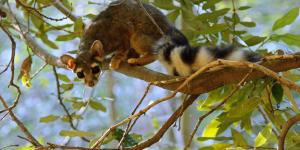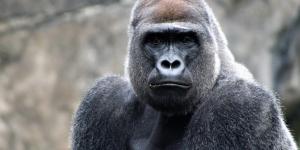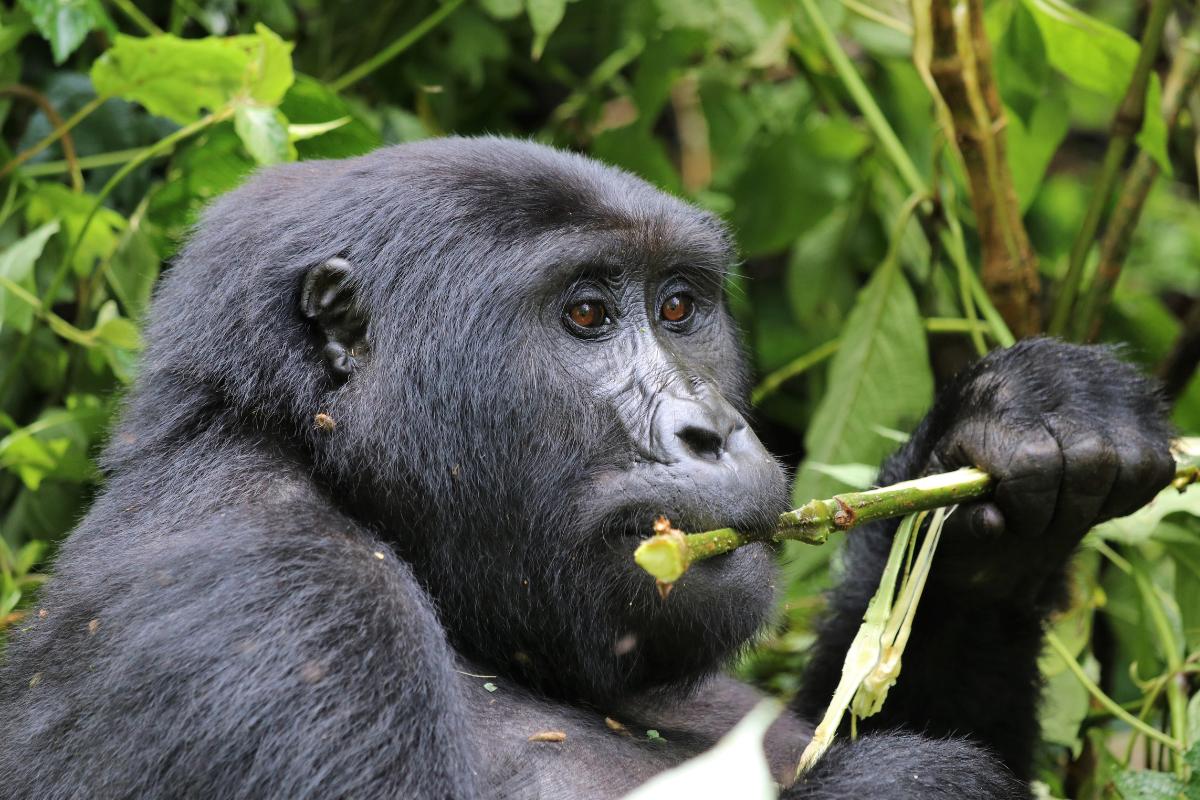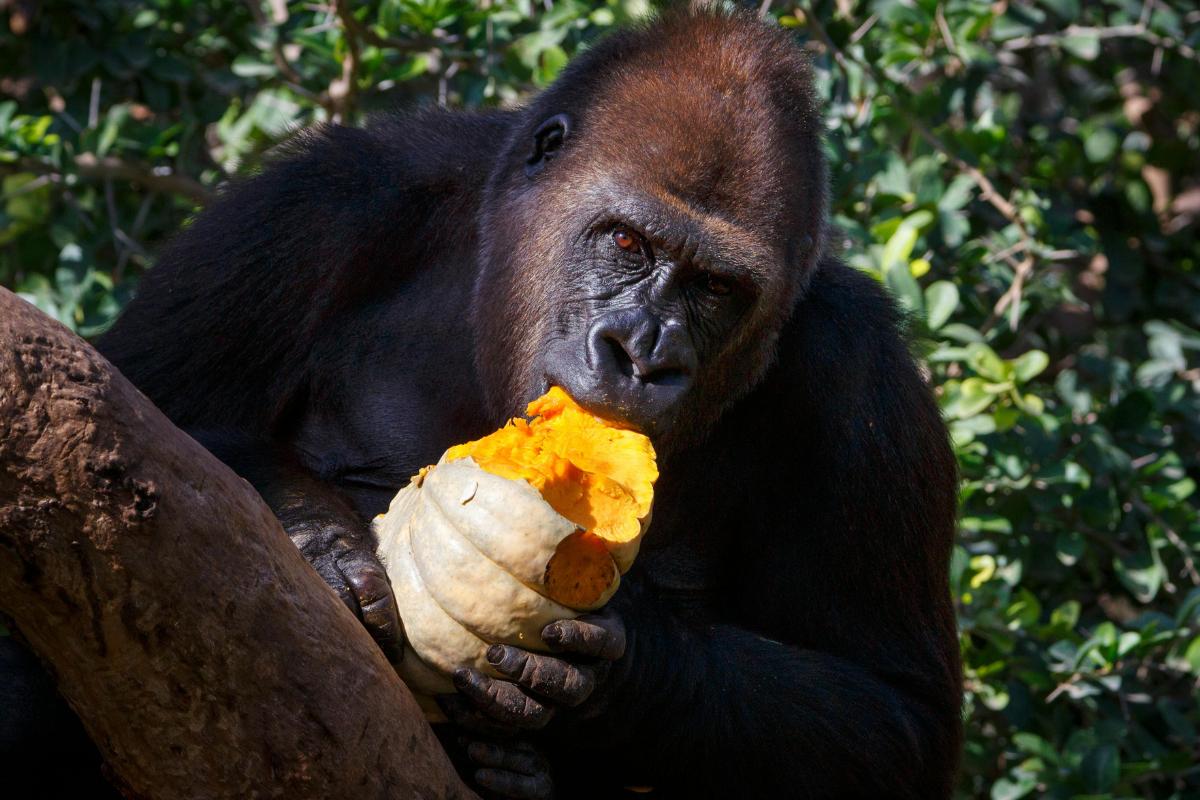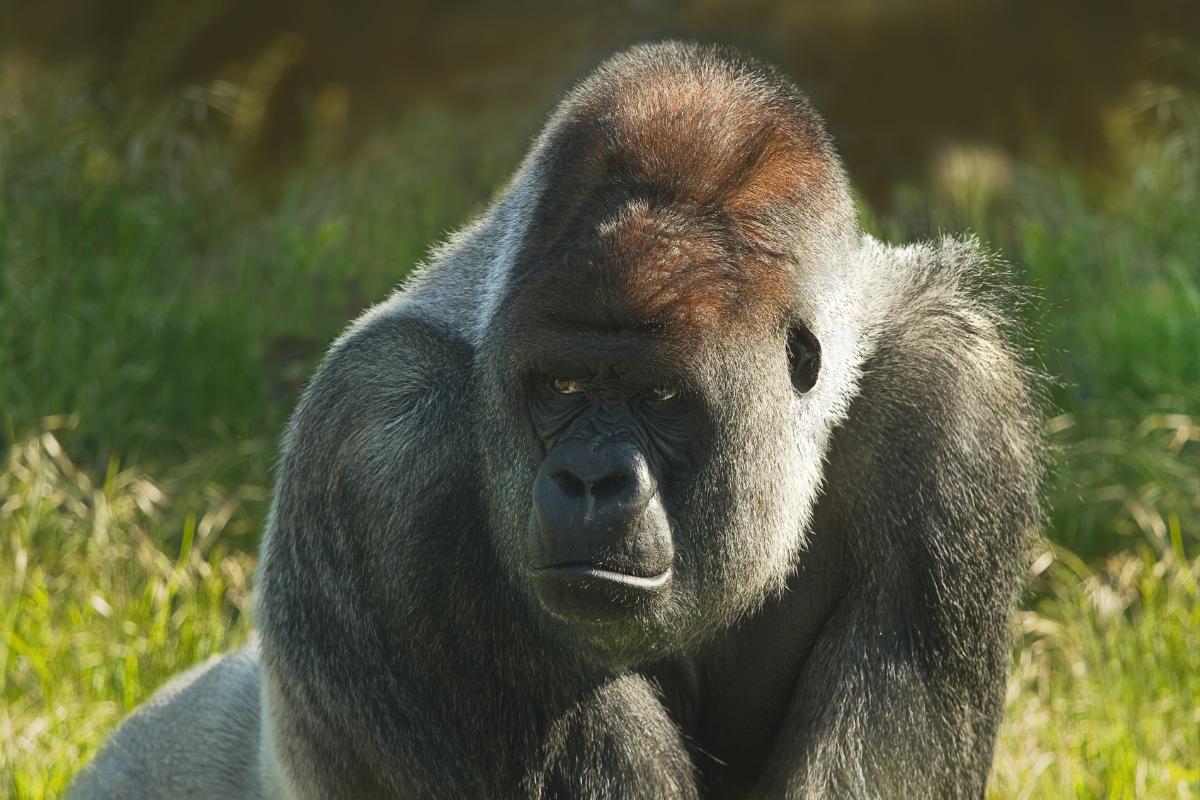What Do Gorillas Eat?

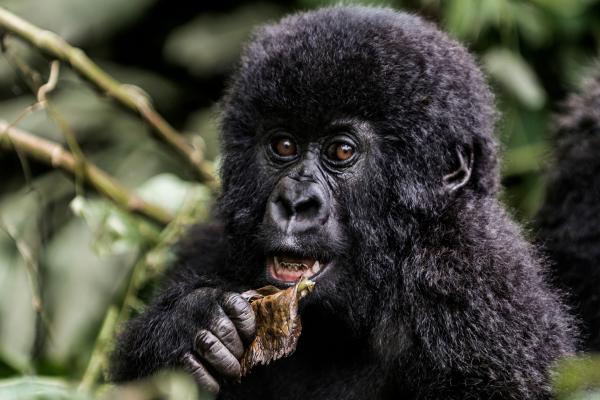
Gorillas are the largest primates on Earth. However, despite their impressive build, gorillas maintain their mass on a diet that consists mainly of plants. Only small insects like ants and termites add animal protein to their plant-based diet. Understanding what gorillas eat helps explain how they survive in their diverse African habitats and why protecting these habitats is crucial for their survival.
The following AnimalWised article explores what do gorillas eat, including how different species vary in their food choices and their ecological adaptations to their environments.
Type of feeding of gorillas
Despite their muscular build and imposing size, gorillas are not carnivores as some might assume. They are primarily herbivorous primates with occasional omnivorous tendencies. Their diet consists of approximately:
- 85-90% leaves, shoots, and stems
- 5-10% fruits and berries (varying by season)
- 1-2% insects (mainly ants and termites)
Gorillas have evolved a digestive system that processes large quantities of fibrous plant matter. Their enlarged cecum and colon ferment fiber effectively, while specialized gut bacteria break down cellulose. This system extracts nutrients efficiently and can process tough plant materials that humans cannot digest.
It is important to note that gorillas do not hunt large prey or show any predatory behavior toward humans. The only animal protein in their diet comes from insects. When gorillas display aggressive behavior, it is to defend their group from perceived threats, not to hunt. They typically avoid human contact and will move away when encountered in the forest.
There are two distinct gorilla species, each with their own subspecies:
1. Eastern Gorilla (Gorilla beringei)
- Mountain gorilla (G. b. beringei)
- Grauer's Gorilla (G. b. graueri)
2. Western Gorilla (Gorilla gorilla)
- Western lowland gorilla (G. g. gorilla)
- Cross river gorilla (G. g. diehli)
Each subspecies has adapted its diet to its specific habitat, from mountain forests to lowland swamps. We will take a closer look at these differences in the following sections. Want to learn which gorilla species live where? be sure to read our other article on the different types of gorillas.

Mountain gorilla diet (G. b. beringei)
Mountain gorillas live at elevations between 2,400-4,000 meters (8,000-13,000 feet) and have developed several adaptations to survive in this environment.
Their thick black fur helps them stay warm in cold mountain temperatures, which can drop below freezing. They have larger nostrils and nasal passages than lowland gorillas, helping them breathe more efficiently in the thin mountain air. Their jaw muscles and teeth are particularly strong to help them chew tough mountain vegetation. These physical adaptations support their specialized diet, which includes:
- Bamboo shoots (seasonal)
- Wild celery
- Thistles
- Stinging nettles
- Bedstraw
- Roots and bark
Mountain gorillas feed on more than 140 species of plants and consume 40-50 pounds (18-23 kg) of vegetation each day. They typically feed during the early morning and late afternoon, spending about 30% of their day searching for food.

Western gorilla diet (Gorilla gorilla)
Western gorillas inhabit the dense rainforests of central Africa, where they encounter more varied vegetation than their mountain relatives.
The lowland subspecies (G. g. gorilla), in particular, lives in diverse habitats ranging from primary forests to swamplands. These environments experience distinct wet and dry seasons, which influence food availability throughout the year.
Unlike mountain gorillas, western gorillas travel longer distances each day through their home ranges searching for food, often covering several kilometers. Their habitat's rich biodiversity allows them to be more selective in their feeding habits.
Their diet includes fruits from over 200 plant species, with the most important food sources being leaves and shoots of the Marantaceae family and Aframomum plant stems. Groups living near swamps regularly wade into water to feed on aquatic plants. While primarily plant-eaters, they supplement their diet with termites and ants, especially during seasons when preferred fruits are scarce.
Western gorillas adapt to seasonal food availability in their territory. During fruit seasons, they feed in areas with high concentrations of fruit trees. As fruit becomes scarce, they shift to eating bark, stems, and leaves. Their ability to locate and return to fruit trees during specific seasons ensures their survival throughout the year.

What do baby gorillas eat?
Young gorillas rely entirely on their mother's milk from birth until they are about five months old.
At this point, they begin to watch and copy their mothers' eating habits. They start by tasting soft leaves and fruits while still drinking milk. Over the next three years, they gradually eat more plants and less milk, learning which foods are safe and how to prepare them. By age three to four, they stop drinking milk and eat the same foods as adult gorillas.
This learning period is important for young gorillas, as they develop feeding skills by watching older group members handle and process different plants.
Ever wondered how baby gorillas develop and grow? Learn about the reproductive cycle of these primates in our other article.
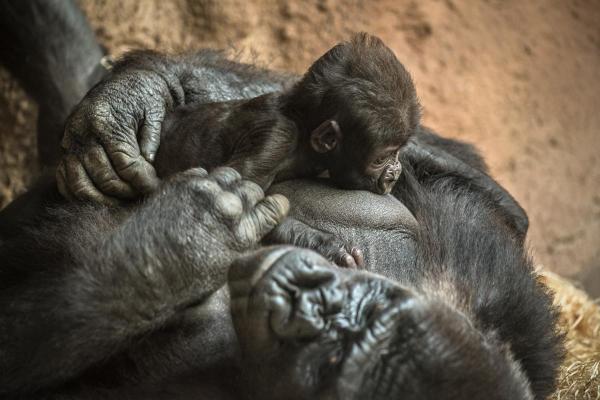
What do silverback gorillas eat?
First of all, it is important to note that a silverback is not a separate species but rather an adult male gorilla who develops silver-gray hair on his back with age, typically after 12 years old. This occurs in all four subspecies.
These males lead gorilla family groups and their diet differs from other group members in quantity rather than content. Due to their body mass, which can reach up to 180 kg (400 pounds) in the wild, silverbacks eat about 18 kg (40 pounds) of vegetation daily, which is nearly twice what other adult gorillas consume.
The plants silverbacks choose contain more protein and nutrients than those eaten by other group members. This selective feeding helps maintain their strength and size, which they need to protect the group and compete with other males. During seasons when protein-rich plants are scarce, silverbacks eat more wood and bark than other group members.
As group leaders, silverbacks decide where and when the group feeds. Their experience helps them locate seasonal food sources and lead their groups to productive feeding areas throughout their territory. This knowledge becomes especially important during dry seasons when food is harder to find.
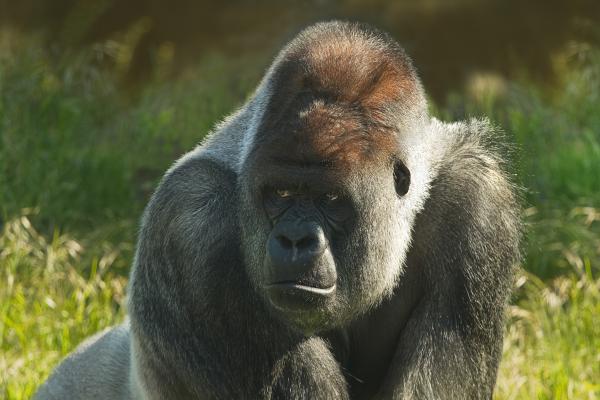
How do gorillas get so big without meat?
Gorillas get their protein from leaves, stems, and shoots. Their digestive system breaks down plant fiber more efficiently than humans, extracting protein and nutrients that humans cannot access. A gorilla's diet provides 10-15% protein content, which is comparable to what humans get from a mixed diet.
They build muscle mass by eating large quantities of vegetation and spending many hours feeding each day. Their intestines are longer than those of humans, which allows more time to break down and absorb nutrients from plants.
Do gorillas eat other monkeys?
Gorillas do not hunt or eat other monkeys or apes. Unlike chimpanzees, which sometimes hunt smaller primates, gorillas are strictly herbivorous except for insects. They share forest areas with other primates like colobus monkeys (Colobus) and mangabeys but do not view them as prey. The only animal protein in their diet comes from ants and termites, which they eat along with vegetation.
Did you know that all this healthy eating makes gorillas incredibly powerful? Discover just how strong these primates are in our other article.
If you want to read similar articles to What Do Gorillas Eat?, we recommend you visit our Facts about the animal kingdom category.
- Ganas, Jessica & Robbins, Martha & Nkurunungi, John & Kaplin, Beth & Mcneilage, Alastair. (2004). Dietary Variability of Mountain Gorillas in Bwindi Impenetrable National Park, Uganda . International Journal of Primatology. 25. 1043-1072. 10.1023/B:IJOP.0000043351.20129.44
- Maisels, F., Bergl, R. A., & Williamson, E. A. (2018). Gorilla (modified version of 2016 assessment). IUCN Red List of Threatened Species 2018. Available from: https://dx.doi.org /10.2305/IUCN.UK.2018-2.RLTS.T9404A136250858.en
- Plumptre, A., Robbins, M.M., and Williamson, E.A. (2019). Gorilla beringei . IUCN Red List of Threatened Species 2019. Available at: https://dx.doi.org/10.2305/IUCN.UK.2019-1.RLTS.T39994A115576640.en

